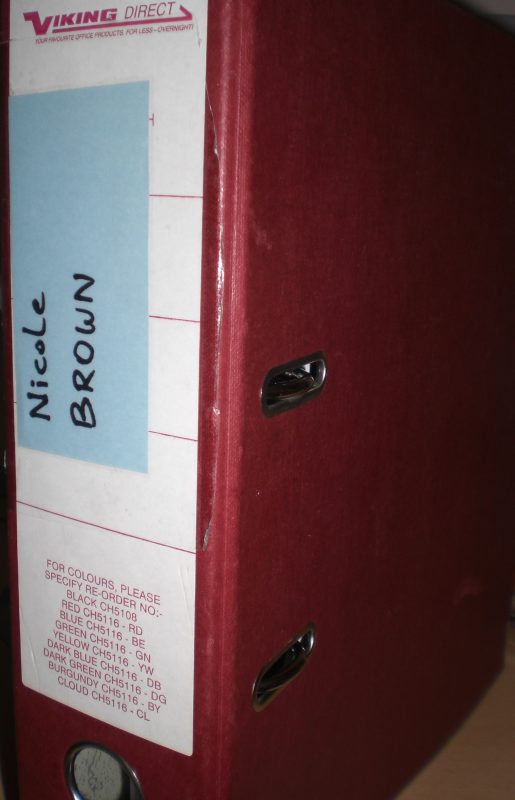 What are portfolios?
What are portfolios?
Many teacher training sessions and professional development courses nowadays link to or culminate in the compilation of portfolios. Portfolios are evidences and resources that are gathered and annotated systematically to provide an overview of the teachers’ achievements, career events and areas for development. The process of gathering information for the portfolios is an opportunity to take a step back from everyday work to reposition yourself and reconsider your values, your development and your learning.
What is the purpose of portfolios?
The purpose and aims of portfolios obviously depends on and is connected with the course objectives, but overall portfolios are summaries you as teachers that help you identify your strengths and learning targets. The portfolios therefore will help you become a reflective practitioner by making you focus on your career and intentions, by making you reflect on your past and look to your future and thus improve your own practice on the basis of your strengths and areas for improvement. Compiling portfolios will also help you prepare effectively for interviews and appraisals, as you will have considered all areas of your teaching practice. By writing the commentaries and annotations to your evidences you are also making connections between theory and practice, which is the first step towards academic engagement and further professional development.
How do I go about writing portfolios?
As a first step you should acquaint yourself fully with the requirements and expectations that are relevant to your course, so that you know which sections you will have to complete. Usually, the contents would include your professional achievements and educational context as well as a brief statement on your philosophical approach to education and your practice. Also, portfolios ask for scholarly engagement with reading either as a separate critique of a publication or within the sections of your other evidences. Another part usually refers to specific professional developments you have undertaken and how you have changed your practice or applied your learning in your classroom. Often, portfolios also have a section where colleagues or line managers will validate your work by providing references or observations.
How do I compile portfolios?
Ensure you consider each section in detail, stick to the word count and adhere to the rules and guidelines you receive.
For example, for some portfolios teachers will be expected to add resources within the Appendices in order to substantiate and evidence their work in detail, in others you are required to work all your evidences into the body of the portfolios.
Make your evidences relevant and specific.
Whatever information you choose to include, be specific about what it is that you want to convey and demonstrate that as detailed as you can. Where you provide evidence for having assessed students’ work, for example, be specific about the chosen part shows your achievement and learning and how your wider teaching practice has changed on that basis.
Be reflective and evaluative.
Your commentary relating to the individual evidences should demonstrate deep reflections and critical thought processes. If you are not familiar with writing critical reflections consider the use of models such as those by Brookfield, Rolfe et al., Gibbs, Kolb and Tripp. By applying these models of reflection as suggested you also refer to literature and so automatically demonstrate your ability to synthesise ideas rather than merely relying on lay reflections.
Use subheadings.
Within individual sections it is often all too easy to lose your focus and to then end up being too superficial in your work. By using subheadings you make sure that you stay focussed but at the same time you guide the reader through your thought processes more clearly. For a case study or evidence section consider the following subheadings: context, rationale, summary of practice, summary of scholarly activity, feedback, evaluation.
Map your work against the assessment criteria.
Where your portfolio is assessed against teaching standards or framework values and the like link to those within your writing by including references like (S2, A3, K5). This will help you ensure that across the portfolio you meet all the criteria required, but will also help the assessor follow your train of thoughts. For example, you may want the assessment example mentioned earlier to evidence your ability to mark or to provide feedback or to communicate effectively with parents or all three. Your assessor needs to know this and therefore mapping is a very helpful tool to demonstrate your critical thinking.
Make your portfolios nice.
This is more for yourself than others. If you keep a nice portfolio you will happily go back to it and add to it. Over time your portfolios become excellent representations of the different stages of your career. Ultimately, although they may be part of a course, portfolios should not be seen as an assignment but a working document of your professional development and learning journey. So you should see this as an opportunity to reflect on your work and make yourself aware of your strengths and areas of weaknesses and identify how you can address those. Writing an action plan as suggested here, for example, would complete the cycle.
Ultimately, although it may look daunting and time-consuming many teachers highlight how much they gain from portfolios and how they feel energised and revitalised from the completed process.
For more information on portfolios, their benefits and uses see:
Hall, Dai (1992). “Professional development portfolios for teachers and lecturers”. British Journal of In-Service Education, 18 (2), pp. 81-86.
[…] original post can be found here. See more posts […]